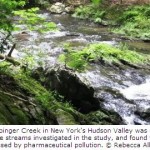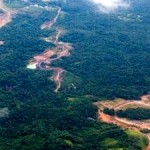 Problems Faced in REDD Projects:
Problems Faced in REDD Projects:
- Forest Degradation and Deforestation: The first step is to stop forest degradation and further deforestation. For large scale plantations, huge tracts of land like grasslands, woodlands, etc., are uprooted and cleared which becomes a cause for additional carbon emissions. Promising to control greenhouse gas emissions under REDD does not give a license or green signal that other activities like burning of fossil fuels, mining and illegal logging can continue at an uncontrolled rate. A proper control can be achieved only when parallel efforts are taken, that is, control destructive activities and increase green cover.
- Conservation of Biodiversity: The next step taken in this direction under REDD is conservation of biodiversity rich areas. Commercial importance attempts to conserve more number of species at minimum cost (Krishnankutty and Chandrshekharan, 2007). What are we trying to conserve – is it species, species habitats or biodiversity? There are many places declared as biodiversity hotspots, some based on number of species, species habitat, endemism, rare and threatened species. This does not imply that areas outside these hotspots are not important for conservation. A comprehensive spatial database is required at all scales, local, regional and global for conservation practices. Efforts for conservation should prioritize ‘ecosystem services of a region’ rather a habitat-based or species-centered approach. For example, Mediterranean forests and temperate grasslands need more attention than biodiversity hotspots of tropical forests (Krishnankutty and Chandrashekharan, 2007).
Conclusion:
The above-mentioned concerns make it clear that all efforts required to implement forestry projects to curb carbon emissions should favour ecological sustainability. The database created by individual organizations under various projects for natural resources should be merged and utilized on a common platform, and made readily available – this would benefit other concerned organizations and professionals like managers, conservators, ecologists in decision making positions, and hence, saving considerable time and efforts. Creation of redundant data should be avoided.
Let us join hands to make a green future for our generations to come.
About the Author:
Dr. Laxmi N Goparaju has worked extensively with Forestry & Ecology Division (FED) of National Remote Sensing Centre (NRSC), Department of Space, India. She holds a doctorate in Environmental Science & Technology from Jawaharlal Nehru Technological University (JNTU), Hyderabad. The topic of her thesis, “Community Diversity Assessment in Vindhyans using Remote Sensing and GIS” formed a part of the Indian Space Research Organisation’s Geosphere Biosphere Programme (IGBP) that addressed issues related to global warming at regional and global level. She can be reached at laxmi@thinktosustain.com.
Also by Dr. Laxmi N Goparaju:
- Save Forests: Avoid Forest Fragmentation
- Forest Resource Management through Geospatial Technology
- Satellite Remote Sensing Data & Geographic Information System in Environmental Impact Studies














